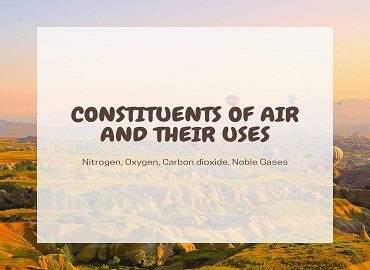Table of Contents
What is Catalysis?
A catalyst is a substance that influences the rate of a reaction without itself undergoing any chemical change and the phenomenon involving the use of catalyst in a reaction is known as Catalysis. If a catalyst increases the rate of a reaction, it is known as a positive catalyst and if decreases the rate of reaction, it is known as a Negative catalyst. According to the modern concept of reaction-mechanism, a catalyst essentially takes part in the reaction. It is consumed in one step and regenerated in the subsequent step. The use of catalyst provides an alternate path for the reaction in which the potential energy barrier between the reactants and products is lowered due to which less energy is required for the formation of transition state which ultimately decomposes into products.
Types of Catalysis:
There are two types of catalysis-
Homogeneous Catalysis:
In this type of catalysis, both catalyst and reactant are present in the same phase. Example-
- In the oxidation of SO2 to SO3, Nitric oxide (NO) is used as a catalyst. Here, catalyst (NO) and reactants (SO2 and O2) are present in the same phase (i.e. gaseous phase).
| 2SO2 (g) + O2 (g) —–NO (g)——> 2SO3 (g) |
- In the hydrolysis of an aqueous solution of cane sugar in presence of dilute H2SO4 as catalyst, the reactants as well as catalyst are present in the same phase (i.e liquid phase).
| C12H22O11 (aq) + H2O (l) —-Dil. H2SO4 (l)———-> C6H12O6 (aq) (glucose) + C6H12O6 (aq) (Fructose) |
- Oxidation of CO by O2 in presence of NO as catalyst.
| 2CO (g) + O2 (g) ——NO (g)——-> 2CO2 (g) |
- Preparation of diethyl ether from ethyl alcohol in presence of concentrated H2SO4 as catalyst.
| 2C2H5OH (l) —-Conc. H2SO4 (l)———-> C2H5-O-C2H5 (l) + H2O (l) |
Heterogeneous Catalysis:
In this type of catalysis, the catalyst is present in a different phase than that of the reactants. The catalyst in heterogeneous catalysis is generally solid and the reactants are mostly gases and sometimes liquids. In heterogeneous catalysis, the reaction starts at the surface of the solid catalyst and so it is also known as surface catalysis. Example-
- Manufacture of H2SO4 by contact process involves oxidation of SO2 into SO3 in presence of V2O5 (solid) as catalyst.
| 2SO2 (g) + O2 (g) —–V2O5 (s)——> 2SO3 (g) |
- Manufacture of Ammonia from N2 and H2 by Haber’s process in presence of Fe (solid) as catalyst.
| N2 (g) + 3H2 (g) —Fe—–> 2NH3 |
- Oxidation of NH3 with O2 in presence of Pt (solid) as catalyst (ostwald’s process).
| 4NH3 + 5O2 —-Pt(s)———> 4NO + 6H2O |
- Manufacture of methyl alcohol from CO and H2 using a mixture of ZnO (s) and Cr2O3 (s) as catalyst.
| CO + 2H2 —–ZnO+Cr2O3 ————> CH3OH |
Nature of Solid Catalysis:
Various type of solids like metals, alloys, metal oxides, metal sulfides etc. are used in heterogeneous catalysis. These catalysts are used in the form of fine powder so as to give a large surface area. The two important aspects of solid catalyst are-
(1) Activity- It is the capacity of a catalyst to increase the rate of a reaction. In certain cases, the use of catalyst increases the rate of reaction to the extent of about 1010 times. For example- a mixture of H2 and O2 does not react at all in the absence of catalyst, however, in presence of Pt as a catalyst the two gases react explosively forming water.
| H2 + O2 ——-> No reaction 2H2 + O2 —Pt—-> 2H2O |
Similarly, the use of MnO2 accelerates the decomposition of Potassium chlorate.
| 2KClO3 —MnO2——-> 2KCl + 3O2 (g) |
(2) Selectivity- It is the ability of a catalyst to direct the reaction to form particular products excluding others. For example- hydrogenation of Acetylene in presence of Pt catalyst gives Ethane whereas in presence of lindlar’s catalyst (Pd+BaSO4) ethylene is obtained.
| C2H6 (Ethane) <—Pt—— C2H2 (Acetylene) + H2 —-Pd+BaSO4——-> C2H4 (Ethylene) |
The role of a catalyst is specific or selective in nature i.e. a catalyst that accelerates the rate of a particular reaction may be ineffective for catalysing another reaction. For Example- MnO2 in the reaction between H2 and O2, and Pt in the decomposition of KClO3 will not increase the rate of respective reactions.









Comments (No)